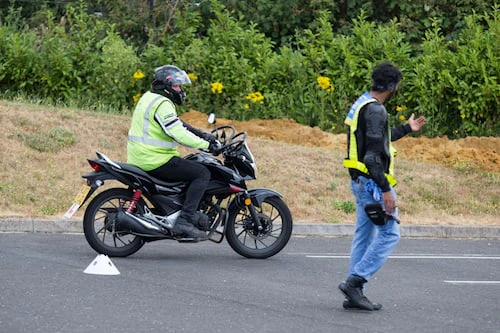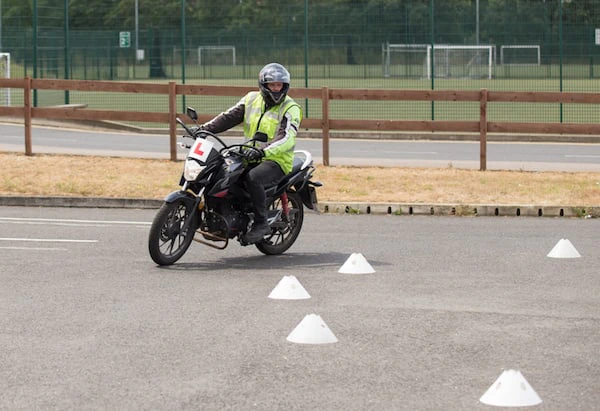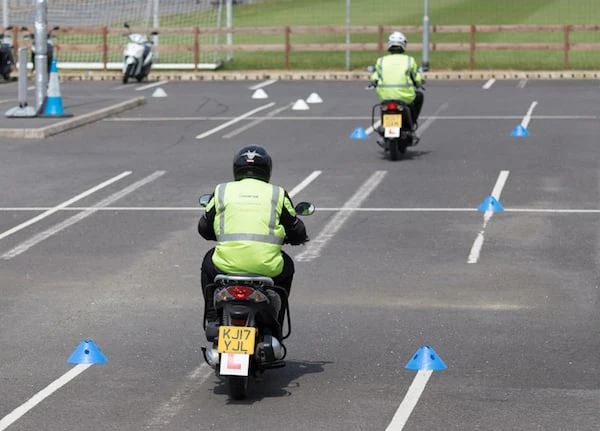back to the blog
The Most Common Questions and Answers About the CBT Test

Tom Baker · August 07, 2018
It’s normal to feel a little nervous about making your first foray into motorcycle riding. And with the CBT (Compulsory Basic Training) ‘test’ being a hoop that you are forced to jump through, it can at times feel a little off-putting. But don’t worry! Because we’re here to show you that it is a lot easier - and way more fun - than you might think.
Does everyone have to complete a CBT test to ride a motorcycle or scooter?
The short answer is YES, if you want to ride a two-wheeled vehicle on the roads here within the UK, you are going to have to spend at a day at a local training centre. But don’t let the thought of that put you off.
First things first, you ignore the ‘Compulsory’ part of the ‘Basic Training’ moniker (because it’s that word that makes it feel like you’re back at school) and relax, because despite being something that every motorcyclist has to go through, the actual basic training that you’re signing up for is really simple, and - most of all - actually fun!

Can I fail the CBT Test?
One of the biggest fears that people have about the CBT is that it’s a ‘test’ of some sort with a pass or fail grade coming at the end of it. But the reality is that this isn’t actually true. There are no grades, no pass rates or tricky questions to catch you out… The basic training is just precisely that; the entire time will be spent having somebody teach you how to operate and ride a motorcycle or scooter correctly.
If you have proved to them by the end of the day that you’re competent, have listened and understood what it is that they have told you, then you’ll receive your CBT training certificate and can then put your L plates onto your bike and ride off into the sunset.
With all that said, if you ride dangerously, or appear to the instructor to not be able to competently handle a motorcycle correctly, then the instructor can refuse to award you with your certificate and you’ll have to come back on another occasion for further training.

What do you need to bring with you on the day?
All you need on the day is to take along your provisional licence, glasses if you need them to see in front of you and sensible clothing. It’s always wise to check with the training school you're attending, but most will have helmets, jackets and gloves for you to borrow, so all you’ll need to do is wear a hard-wearing long-sleeved top, full-length trousers - yes, normal jeans are fine unless you intend on falling off onto your knees a lot - and sturdy shoes with boots being the best pick!
In fact, sensible shoes would probably be our most recommended focus here… If you’ve got leather boots that offer some ankle protection then these are thoroughly recommended.
(With hot engines and various bits of metal machinery all sticking out around your ankles, a little protection here will go a long way to making your day go more smoothly).

What does the actual CBT test involve?
The CBT actually covers the basic principles of motorcycle riding in both ‘theory’ and in ‘practice’ and constitutes of 5 parts of the CBT.
So you can expect a basic introduction in a classroom to begin with, usually with an instructor who has a few model bikes on a model road who will use them to explain the basics of handling and road use.
You’ll be told about the basics of how a motorcycle works - important for maintenance and safety - and then you’ll be shown around the controls of the bike that you’re taking your test on; if you’re taking a test on a motorcycle with gears for example, you’ll be shown how the clutch works and how to shift gears with the lever by your left foot.
And then you’ll move out of the classroom and into a safe, closed environment for a little bit of the good stuff - actually riding!
Once you’ve proven to the instructor that you’ve mastered the throttle, gears and braking successfully, you’ll then be ready to don a high-visibility vest and to head on out onto the open road for some slow and careful riding amongst the town’s traffic.
And that’s really all there is to it. Listen, pay attention and don’t be afraid to ask questions if you don’t understand anything and remember that every single motorcyclist or scooter rider on the road today has had to do exactly the same thing.
And of course - most importantly - relax and have fun! You’re life is about to get immeasurably more exciting now you’re all set for a life on the open road!


